 Clark Baim and Tony Morrison But what should I do?!! This is what clinicians ask me afterevery talk I give. Baim and Morrison have filled a crucial needin Dynamic-Maturational attachment theory: the translation oftheory into practice. After two decades of theory development,accomplishing this is my personal goal for the next decade. Thisbook marks a strong beginning and it is aimed exactly whereit is needed most: toward feet on the street professionals whomust resolve the problems of troubled families every day. Theideas are fresh and integrative; the language is clear. Bravo!Patricia M.
Clark Baim and Tony Morrison But what should I do?!! This is what clinicians ask me afterevery talk I give. Baim and Morrison have filled a crucial needin Dynamic-Maturational attachment theory: the translation oftheory into practice. After two decades of theory development,accomplishing this is my personal goal for the next decade. Thisbook marks a strong beginning and it is aimed exactly whereit is needed most: toward feet on the street professionals whomust resolve the problems of troubled families every day. Theideas are fresh and integrative; the language is clear. Bravo!Patricia M.
Crittenden, PhD, DevelopmentalPsychopathologist and Founding President of IASA(The International Association for the Study of Attachment) This interactive practice guide offers a new approach to attachment-based practice with adults. By integrating audio, visual and written information around five characters and their stories, the guide brings attachment theory to life in a conceptually clear but dynamic, engaging and hands-on way. This guide offers: an introduction to contemporary attachment theory and its links with neuro-biology a practical, user-friendly interactive workbook for frontline practitioners to help them understand adult attachment theory and its relevance to their work for assessment, A new practice model and interactive resource a specific but flexible interviewing strategy (the LEARN Model), which helps practitioners to work with confidence in an attachment-informed way frameworks, tools and other resources to assist practitioners who want to use a relationship-based, attachment-informed approach inter a work-based resource that can be used by individuals, teams, co-workers, supervisors or teachers/trainers vention and super to reflect on and improve the preparation, use and support of attachment thinking in practice an approach that speaks to diverse professions and modalities, and that can be used in a multidisciplinary environment by both adult and childrens services practitioners ways to increase the confidence of practitioners to act as change agents with their clients vision with five detailed case studies and attachment-based interviews (in written and audio format), step-by-step commentary, illustrations and practical exercises to apply the learning throughout. Who is this book for? This book is aimed primarily at frontline practitioners and teams within the social care, mental health, criminal justice and education professions. People in professions such as social work, nursing, and T Clark Baim psychology, psychotherapy, counselling, family therapy, psycho-sexual counselling, education, probation, forensic mental health, adoption and fostering, residential care, leaving care services and related professions will ony find the book helpful, as will students, teachers and trainers in any of these fields. Morrison Pavilion Publishing and Media Ltd Telephone: 01273 434943 Rayford House Facsimile: 01273 227308 School Road Email: info@pavpub.com Hove BN3 5HX Web: www.pavpub.com UK Clark Baim and Tony Morrison E-245-3-11 ISBN: 978-1-908066-17-6 AttachmentBased_halfcanadian 2012.indd 1 04/04/2012 15:35  Attachment-based Practice with Adults:Understanding strategies and promotingpositive changeA new practice model and interactive resource for assessment,intervention and supervision Clark Baim and Tony Morrison 2011 Published by: Pavilion Publishing and Media Ltd Rayford House School Road Hove BN3 5HX UK Tel: 01273 434943 Fax: 01273 227308 Email: info@pavpub.com Web: www.pavpub.com First published 2011.
Attachment-based Practice with Adults:Understanding strategies and promotingpositive changeA new practice model and interactive resource for assessment,intervention and supervision Clark Baim and Tony Morrison 2011 Published by: Pavilion Publishing and Media Ltd Rayford House School Road Hove BN3 5HX UK Tel: 01273 434943 Fax: 01273 227308 Email: info@pavpub.com Web: www.pavpub.com First published 2011.
Reprinted 2012, 2013. The authors have asserted their rights in accordance with the Copyright, Designsand Patents Act 1988, to be identified as the authors of this work. All rights reserved. With the exception of the permission given below, no part of this publication may be reproduced, stored in a retrieval system, or transmitted in any form or by any means, electronic, mechanical, photocopying, recording or otherwise, without the prior permission in writing of the publisher and the copyright owners. Photocopying/printing permission The discourse marking sheets in Chapter 2 on pages 76-87, the Interviewing Guide on pages 89-132 and the client-related pages in Chapter 9 (pages 264, 283) in this guide may be printed or copied without fee or prior permission by the purchaser subject to both of the following conditions: that the item is reproduced in its entirety, including the copyright acknowledgement; that the copies are used solely by the person or organisation who purchased the original publication. ISBN: 978-1-908066-17-6 978-1-909810-83-9 Pavilion is the leading publisher and provider of professional development productsand services for workers in the health, social care, education and community safetysectors. ISBN: 978-1-908066-17-6 978-1-909810-83-9 Pavilion is the leading publisher and provider of professional development products and services for workers in the health, social care, education and community safety sectors.
We believe that everyone has the right to fulfil their potential and we striveto supply products and services that help raise standards, promote best practices andsupport continuing professional development. Editor: Jo Hathaway Illustrations by Jo Hathaway Cover design and page layout: Emma Garbutt, Pavilion Layout design: Tony Pitt Printed by: CMP Digital Print Solutions Attachment Based Practice_inside 2013.indd 2 08/03/2013 11:51  Attachment Based Practice_inside 2013.indd 3 08/03/2013 11:51 ContentsAbout the Authors ..........................................................................................................v Acknowledgements ...................................................................................................... vii Foreword by David Howe ..............................................................................................ix Introduction and How to Use this Guide ......................................................................1 Welcome to this interactive practice guide ........................................................................ 1 Origins of this practice guide ............................................................................................. 2 Who is this guide for? ......................................................................................................... 3 What are the aims of this guide? ........................................................................................ 4 Guiding beliefs .................................................................................................................... 5 How to use this guide: a roadmap ..................................................................................... 7 Tips for different readers .................................................................................................... 9 Now you are ready to start ............................................................................................... 12 PART ONEAttachment Theory, Memory Systems, Discourse and the LEARN Model ..............13 Chapter 1: Introducing Attachment Theory
Attachment Based Practice_inside 2013.indd 3 08/03/2013 11:51 ContentsAbout the Authors ..........................................................................................................v Acknowledgements ...................................................................................................... vii Foreword by David Howe ..............................................................................................ix Introduction and How to Use this Guide ......................................................................1 Welcome to this interactive practice guide ........................................................................ 1 Origins of this practice guide ............................................................................................. 2 Who is this guide for? ......................................................................................................... 3 What are the aims of this guide? ........................................................................................ 4 Guiding beliefs .................................................................................................................... 5 How to use this guide: a roadmap ..................................................................................... 7 Tips for different readers .................................................................................................... 9 Now you are ready to start ............................................................................................... 12 PART ONEAttachment Theory, Memory Systems, Discourse and the LEARN Model ..............13 Chapter 1: Introducing Attachment Theory
Next page

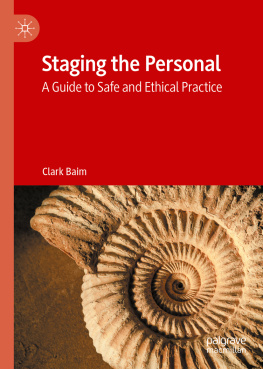
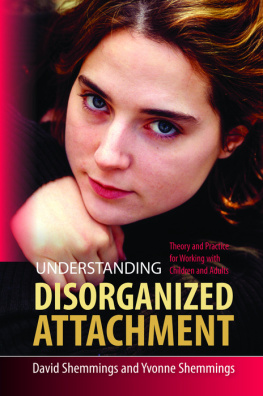
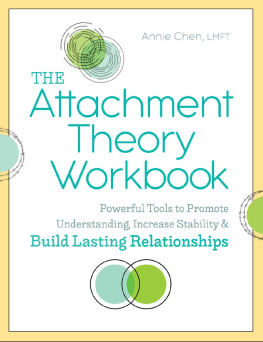
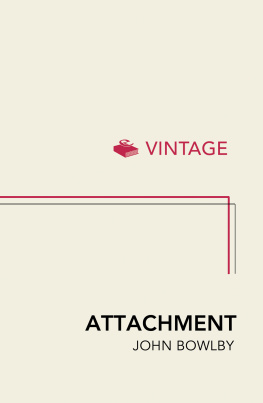

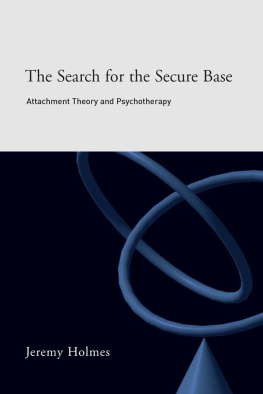
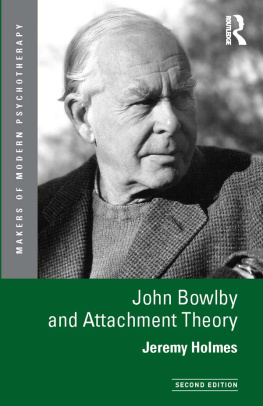
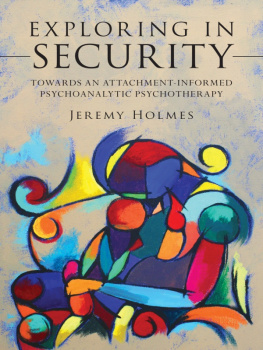
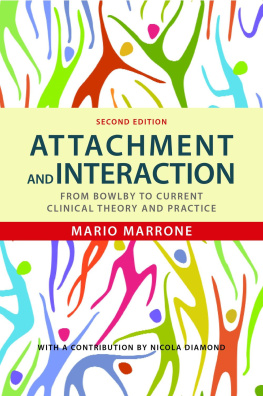
 Clark Baim and Tony Morrison But what should I do?!! This is what clinicians ask me afterevery talk I give. Baim and Morrison have filled a crucial needin Dynamic-Maturational attachment theory: the translation oftheory into practice. After two decades of theory development,accomplishing this is my personal goal for the next decade. Thisbook marks a strong beginning and it is aimed exactly whereit is needed most: toward feet on the street professionals whomust resolve the problems of troubled families every day. Theideas are fresh and integrative; the language is clear. Bravo!Patricia M.
Clark Baim and Tony Morrison But what should I do?!! This is what clinicians ask me afterevery talk I give. Baim and Morrison have filled a crucial needin Dynamic-Maturational attachment theory: the translation oftheory into practice. After two decades of theory development,accomplishing this is my personal goal for the next decade. Thisbook marks a strong beginning and it is aimed exactly whereit is needed most: toward feet on the street professionals whomust resolve the problems of troubled families every day. Theideas are fresh and integrative; the language is clear. Bravo!Patricia M. Attachment-based Practice with Adults:Understanding strategies and promotingpositive changeA new practice model and interactive resource for assessment,intervention and supervision Clark Baim and Tony Morrison 2011 Published by: Pavilion Publishing and Media Ltd Rayford House School Road Hove BN3 5HX UK Tel: 01273 434943 Fax: 01273 227308 Email: info@pavpub.com Web: www.pavpub.com First published 2011.
Attachment-based Practice with Adults:Understanding strategies and promotingpositive changeA new practice model and interactive resource for assessment,intervention and supervision Clark Baim and Tony Morrison 2011 Published by: Pavilion Publishing and Media Ltd Rayford House School Road Hove BN3 5HX UK Tel: 01273 434943 Fax: 01273 227308 Email: info@pavpub.com Web: www.pavpub.com First published 2011. Attachment Based Practice_inside 2013.indd 3 08/03/2013 11:51 ContentsAbout the Authors ..........................................................................................................v Acknowledgements ...................................................................................................... vii Foreword by David Howe ..............................................................................................ix Introduction and How to Use this Guide ......................................................................1 Welcome to this interactive practice guide ........................................................................ 1 Origins of this practice guide ............................................................................................. 2 Who is this guide for? ......................................................................................................... 3 What are the aims of this guide? ........................................................................................ 4 Guiding beliefs .................................................................................................................... 5 How to use this guide: a roadmap ..................................................................................... 7 Tips for different readers .................................................................................................... 9 Now you are ready to start ............................................................................................... 12 PART ONEAttachment Theory, Memory Systems, Discourse and the LEARN Model ..............13 Chapter 1: Introducing Attachment Theory
Attachment Based Practice_inside 2013.indd 3 08/03/2013 11:51 ContentsAbout the Authors ..........................................................................................................v Acknowledgements ...................................................................................................... vii Foreword by David Howe ..............................................................................................ix Introduction and How to Use this Guide ......................................................................1 Welcome to this interactive practice guide ........................................................................ 1 Origins of this practice guide ............................................................................................. 2 Who is this guide for? ......................................................................................................... 3 What are the aims of this guide? ........................................................................................ 4 Guiding beliefs .................................................................................................................... 5 How to use this guide: a roadmap ..................................................................................... 7 Tips for different readers .................................................................................................... 9 Now you are ready to start ............................................................................................... 12 PART ONEAttachment Theory, Memory Systems, Discourse and the LEARN Model ..............13 Chapter 1: Introducing Attachment Theory